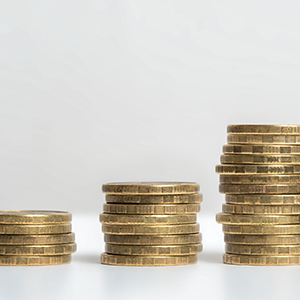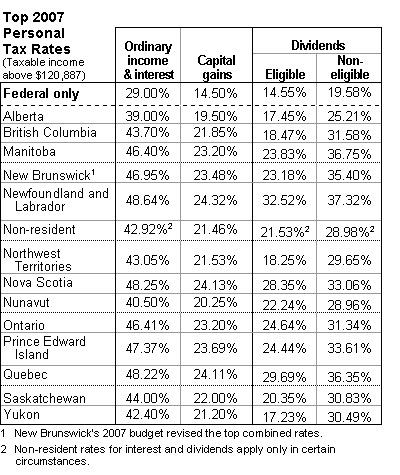The American Frontier has seen its share of tremendous development surrounding fiat currency during the 18th century. Following the Frontier’s establishment in 1607, countless small and isolated towns emerged in the western regions of the United States. Due to how isolated these towns were, trading exclusively took place in and around the settlements. In light of the adoption of fiat currency in the 18th century, this led to most of the towns issuing their own currency in order to accommodate trade and gold demand.

During the 11th century, the government established a monopoly on its issuance, and about the end of the 12th century, convertibility was suspended. The use of such money became widespread during the subsequent Yuan and Ming dynasties. Another mathematical model that explains the value of fiat money comes from game theory. In a game where agents produce and trade objects, there can be multiple Nash equilibria where agents settle on stable behavior. In a model by Kiyotaki and Wright, an object with no intrinsic worth can have value during trade in one of the Nash Equilibria.
From 1944 to 1971, the Bretton Woods agreement fixed the value of 35 United States dollars to one troy ounce of gold. Other currencies were calibrated with the U.S. dollar at fixed rates. The U.S. promised to redeem dollars with gold transferred to other national banks. Trade imbalances were corrected by gold reserve exchanges or by loans from the International Monetary Fund .
In his book “The Laws,” scholar Plato suggested scrapping silver and gold coinage and endorsed a local authority-ruled fiat currency (probably iron-made). Nevertheless, the unfortunate consequences of his proposal had him imprisoned. Although it is a strong indicator of opportunity costs in the economy, it is a cautious tool for hyperinflation. Too much printing of this money without serving the affected indicators may cause crises in demand and supply, leading to hyperinflation.
Since then, most countries have adopted fiat monies that are exchangeable between major currencies. You’ve probably heard the expression, “Backed by the full faith and credit of the US government,” in reference to the dollar. It gets its value based on the trust people place in the authorities that issue it. Commodity-backed currencies, on the other hand, get their value from the underlying price of the gold, silver, or other materials they’re linked to.
In some regions, such as New England and the Carolinas, the bills depreciated significantly and there was a hike in commodity prices as the bills lost value. During wars, countries turn to fiat currencies to preserve the value of precious metals such as gold and silver. For example, the Federal Government of the United States turned to a form of fiat currency referred to as “Greenbacks” during the American Civil War. The government halted the convertibility of its paper money to gold or silver during this war. Prior to the 20th century, most countries utilized some sort of gold standard or backing by a commodity.
What is Fiat Money?
At the height of the crisis, the Zimbabwe government was forced to issue a 100-trillion Zimbabwean dollar note. Eventually, foreign currencies were used more widely than the Zimbabwean dollar. Like any other mode of exchange, fiat money has some pros and cons. Before the US dollar had been severed from the gold standard, for example, people would historically hoard gold in times of economic uncertainty. Adding to this, there is greater opportunity for bubbles with fiat currency – an economic cycle in which there is a rapid increase in price before an equally rapid decline in price. VendorsA vendor refers to an individual or an entity that sells products and services to businesses or consumers.
- The adoption of fiat currencies has a number of advantages and disadvantages.
- Inflation is a decrease in the purchasing power of money, reflected in a general increase in the prices of goods and services in an economy.
- Fiat money is a type of currency that is not backed by a commodity, such as gold or silver.
- Fiat money also has other beginnings in 17th-century Europe, having been introduced by the Bank of Amsterdam in 1683.
- The Canadian penny, which was mostly copper until 1996, was removed from circulation altogether during the autumn of 2012 due to the cost of production relative to face value.
There is less risk of an unexpected devaluation caused by the supply of fiat currencies, as any increase in supply is a pre-empted decision made by a fiat currency’s government. Physical commodities like gold or silver have a value attached to them, and we can redeem them by exchanging them through currencies. However, the currency has no backing concerning the physical commodity.
Treatment in economics
Every single currency around the world today is an example of a fiat currency. As fiat money has no intrinsic value as an isolated asset, its only utility lies in its value as a means of exchange that is purely reliant on the government’s faith that backs it. This allows for fiat money to easily etx capital reviews become subject to the biases of the government behind it. In principle, when a government makes a bad economic decision, the value of its currency tends to decline. What amplifies the downside in this is the fact that forex markets are prone to reflect exaggerated images of economies.
This means that if a government, for example, fails slightly in implementing a decided policy, the value of its currency will most likely fall below a reasonable price. Fiat is Latin for “let there be,” which captures the control that a central bank has over its currency. A control that extends to the central bank’s ability to simply conjure money into existence as it deems fit.

Fiat money is a currency that is declared money by decree—not by the marketplace. Though some fiat currencies were once backed by commodities, they are now only backed by the legislative power of the government issuing them. Fiat money is a currency that is backed by nothing except the faith and credit of the government issuing it. Basically every usable currency around the world today is a fiat currency.
This move prevailed after the federal government stopped exchanging gold as a currency valuation from other countries. It provides greater flexibility to central banks as it can curb the printing behavior for the economy concerned. Fiat money is currency backed by the government that issued it and isn’t tied to a commodity such as gold. During the 1960s, production of silver coins for circulation ceased when the face value of the coin was less than the cost of the precious metal it contained . In the United States, the Coinage Act of 1965 eliminated silver from circulating dimes and quarter dollars, and most other countries did the same with their coins.
Britannica is the ultimate student resource for key school subjects like history, government, literature, and more. Talent acquisition is the strategic process employers use to analyze their gdax trading tutorial long-term talent needs in the context of business … Self-sovereign identity is a model for managing digital identities in which individuals or businesses have sole ownership …
Dictionary Entries Near fiat money
Against the backdrop of fiat money as a means of exchange, modern economies have begun adopting currencies known as cryptocurrencies. Cryptocurrencies are completely digital and decentralized currencies. Their decentralized and deflationary nature is seeing them challenge traditional fiat money with regard to intrinsic value. kab definition There are advantages and disadvantages of using fiat money as a primary currency. Historically, governments would mint money out of gold and silver, metals with inherent value due to their rarity and desirability. Paper currency made legal tender by a fiat of the government, but not based on or convertible into coin.

The Subprime Mortgage Crisis of 2007 showed that the central bank can’t always control everything needed to fully protect the economy. So, when we say a currency backed by the government itself, that’s fiat money. Ultimately, the fiat money has value because the government says it does — there is no physical backing behind them. Fiat money has value because government taxes are paid by it and it is made legal tender for business transactions.
Recommended Articles
If you’re holding several fiat currencies, it can be difficult to move your money around. The purchasing power of the U.S. dollar has declined signifcantly since the Federal Reserve was created in 1913. Today you can purchase only 3.5% of what you could do back then with one dollar. Governments that create a fiat currency can change the amount of currency in circulation to try and manage the economy. Let’s talk about how fiat money works and then discuss the alternatives.
Investopedia requires writers to use primary sources to support their work. These include white papers, government data, original reporting, and interviews with industry experts. We also reference original research from other reputable publishers where appropriate. You can learn more about the standards we follow in producing accurate, unbiased content in oureditorial policy. Furthermore, if people lose faith in a nation’s currency, the money will no longer hold value.
Alternatives to Fiat Money
You can see that they are just pieces of paper printed with symbols – they have no intrinsic value of their own. They only become valuable when the government decrees that they have worth. A government must establish and regulate the currency responsibly in order for fiat money to be successful. Concerning the fiat money vs commodity money system, both terms differ regarding payment implications, government interference, and currency type. Its advantages include abundant supply, stability, and inexpensive production costs.
Etymology of fiat money
When applied to paper money, fiat currency refers to the scary notion that our dollar has value only because the government says it does. Pro-climate monetary policies need to involve fiat money, meaning money created by central banks, and/or authorized by legislatures. There is always the possibility of hyperinflation when a country prints its own currency; however, most developed countries have experienced only moderate bouts of inflation.
But unlike fiat currency, commodity money can have variations in the quality of the money — i.e. a lower-grade metal or crop. The U.S. dollar was originally on the gold standard, which means all dollars could be traded for gold but is now a fiat currency. Franklin Roosevelt severed the gold standard for Americans in 1933, to be able to inflate the currency and attempt to stimulate the economy during the Great Depression. Earlier in U.S. history, the country’s currency was backed by gold . The federal government stopped allowing citizens to exchange currency for government gold with the passage of the Emergency Banking Act of 1933.


